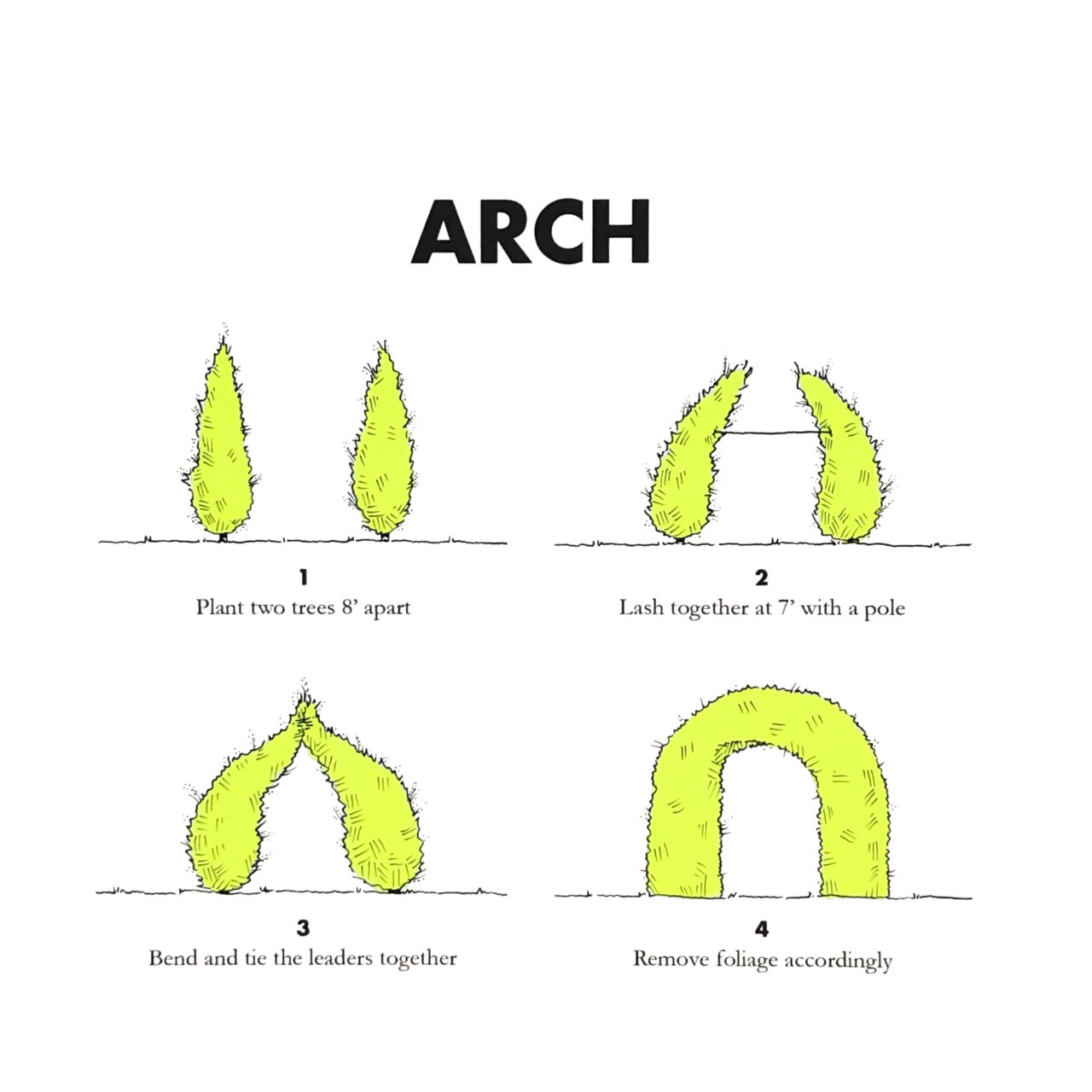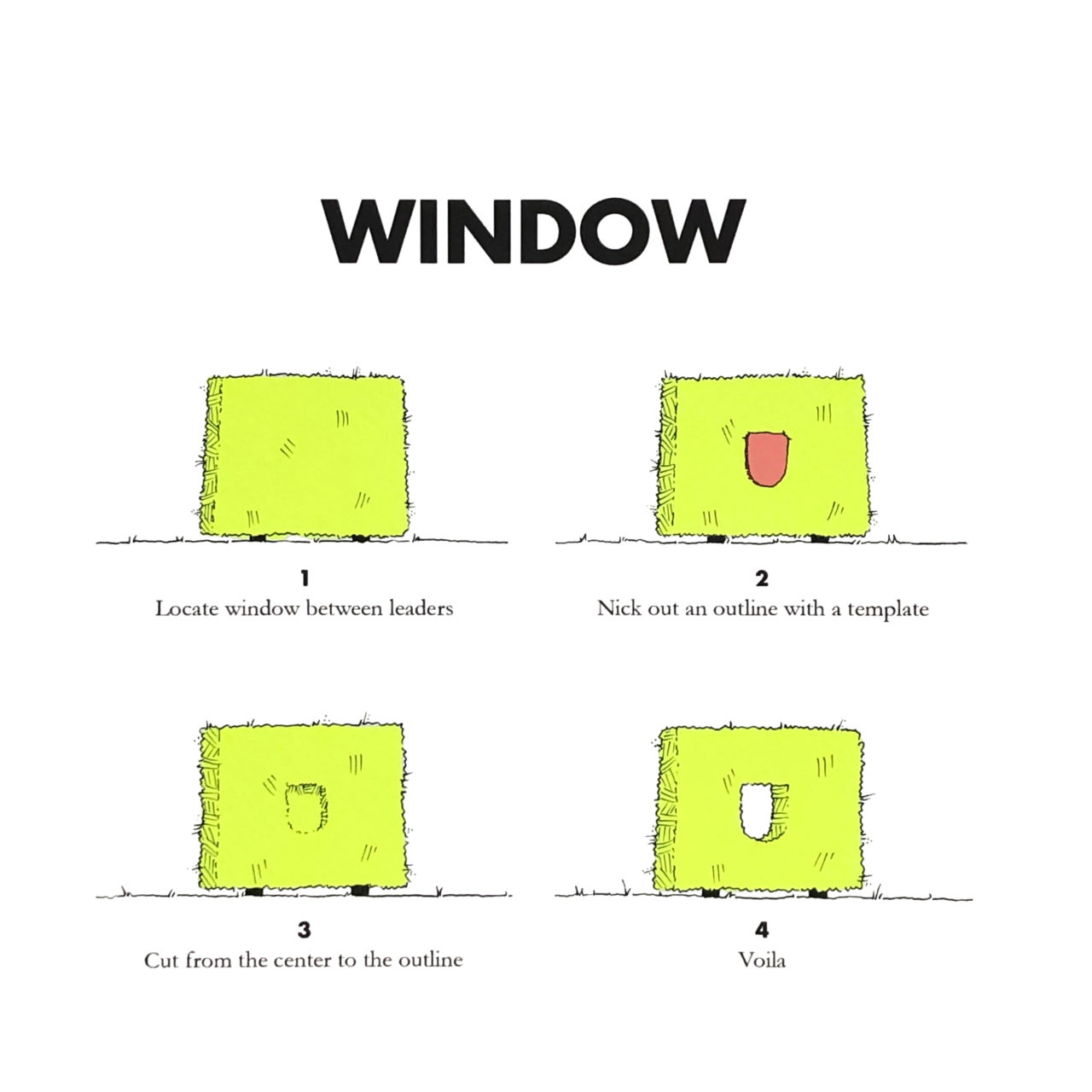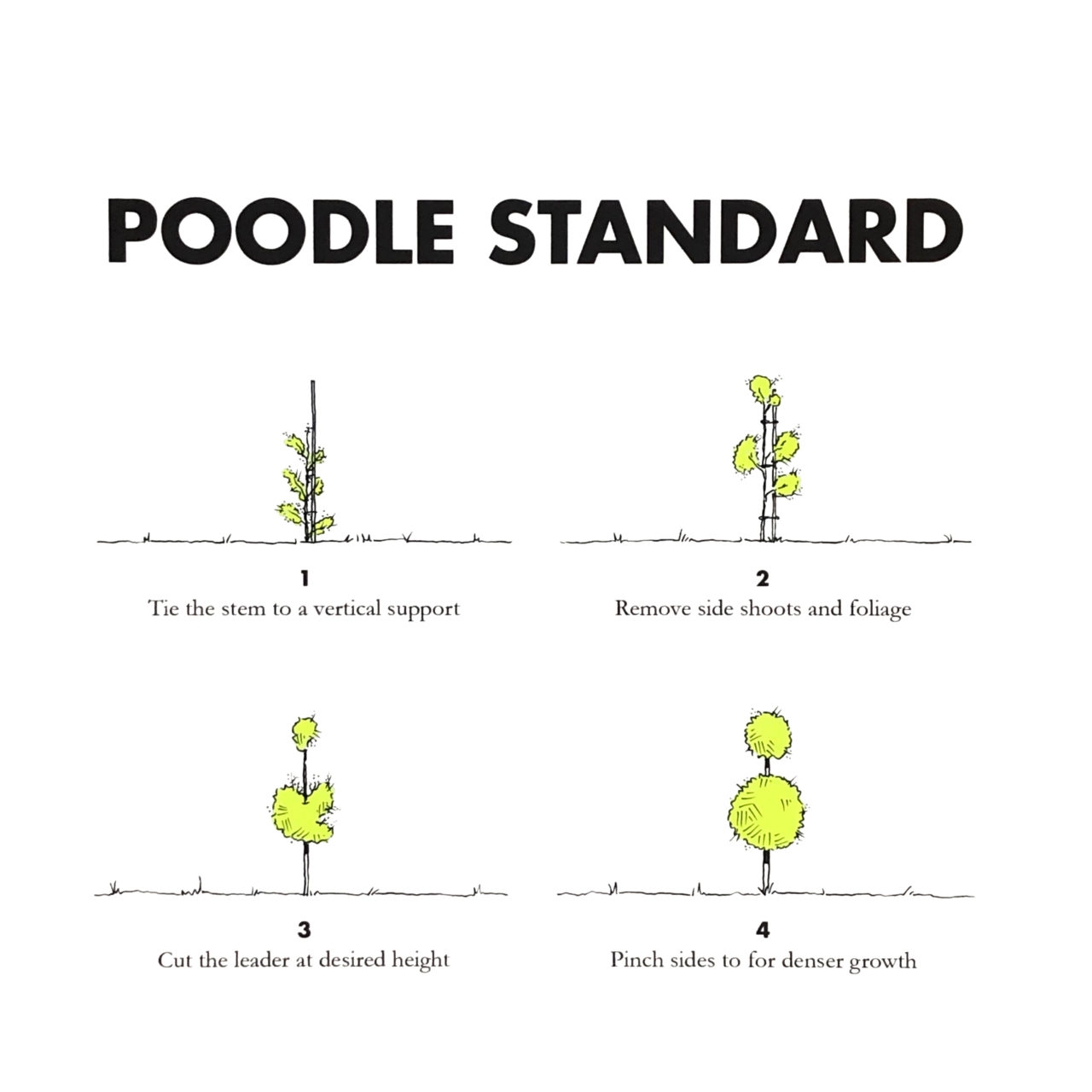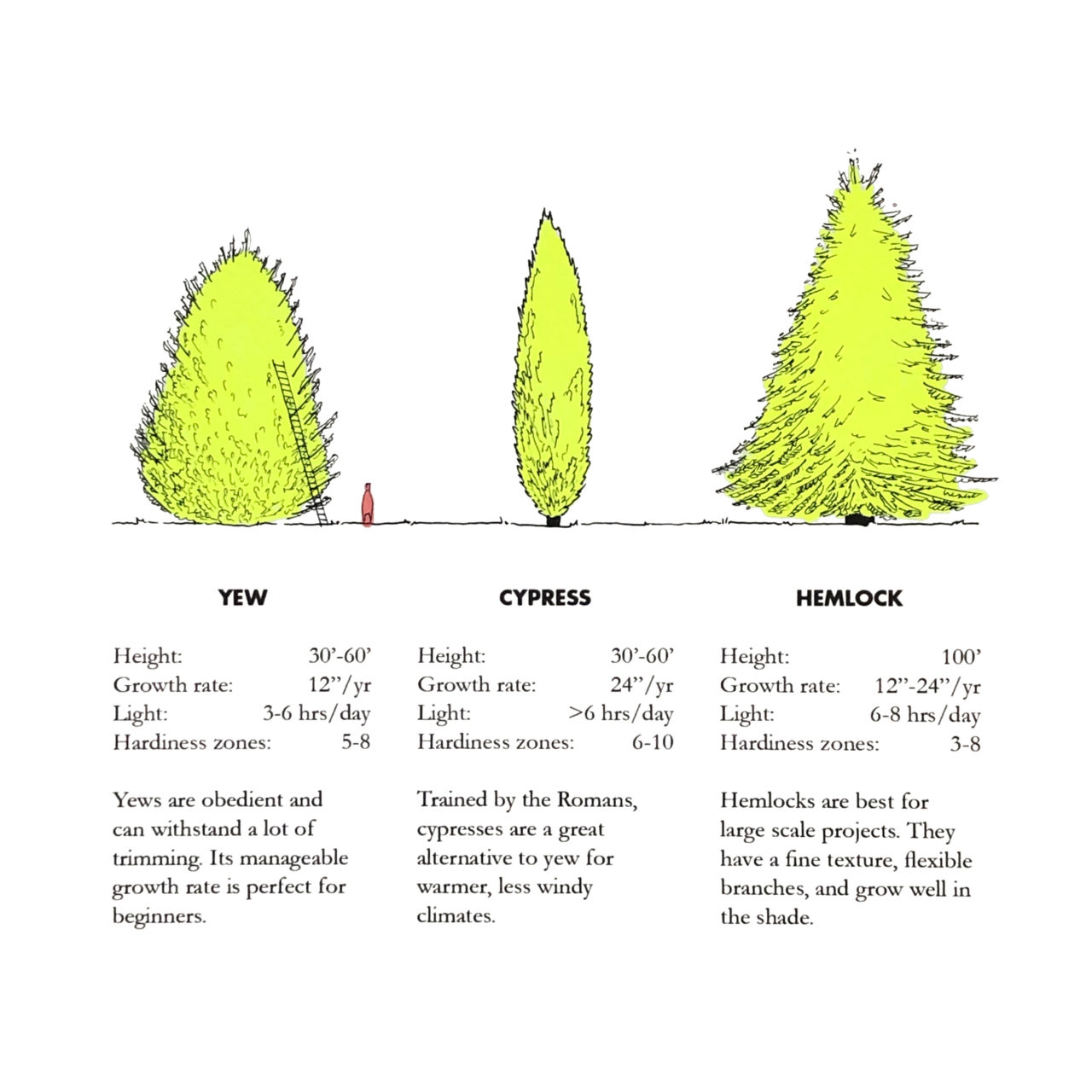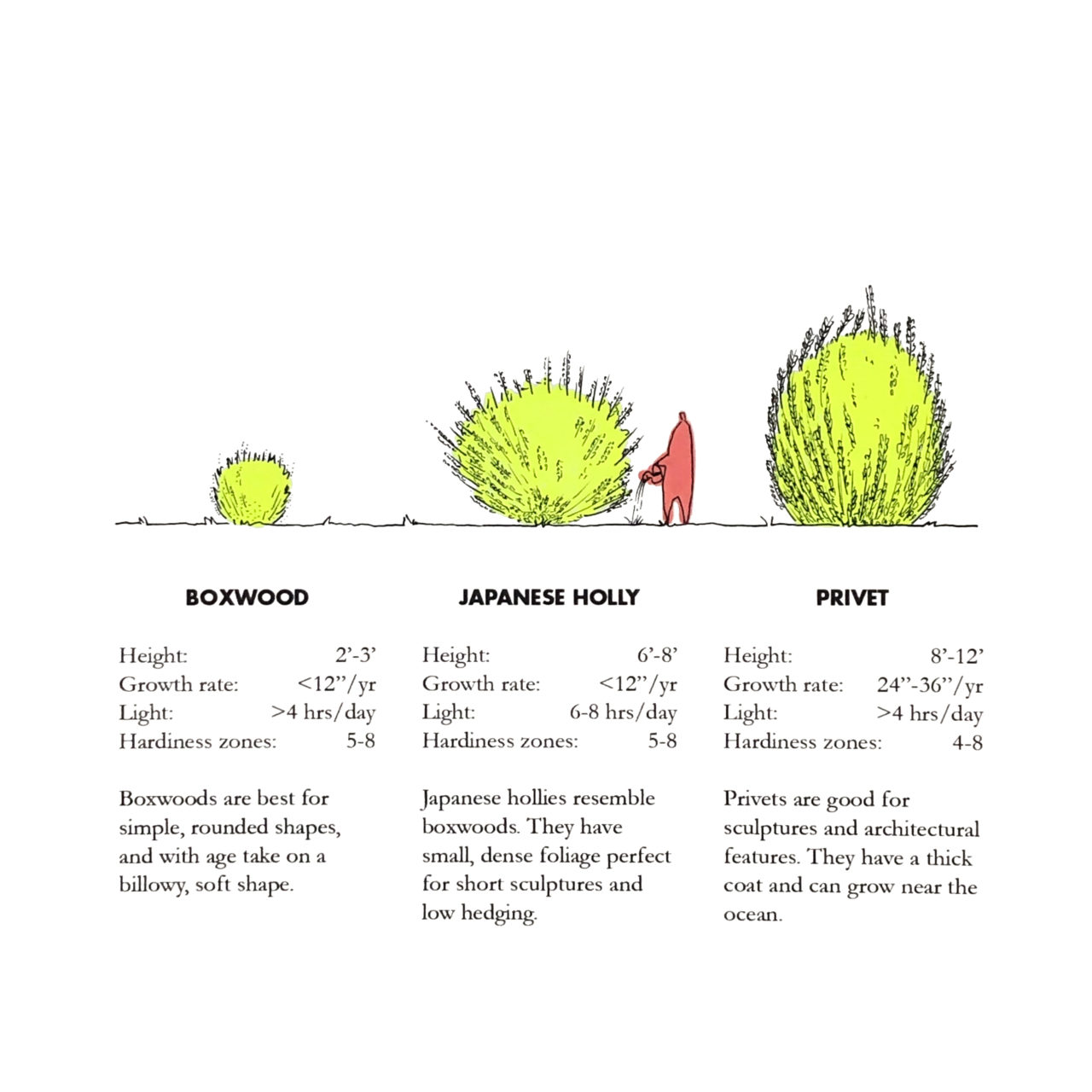Table of Contents
- Introduction
Most Plants Can Become Topiary, But Some Are Better Than Others
History: It All Began with the Romans...
Topiary Tango Tells Tales
Topiaries Mask Volumes
Which Limbers Up Architecture
Topiary Architecture Has Design Implications
Take These Two, for Example
Installation Views
Most Plants Can Become Topiary, But Some Are Better Than Others
Topiary takes on many forms: graphic knot gardens composed of herbs and boxwoods, full-scale privet dining tables, or lengthy linden palisades. Each version shares the same building-block principles.
First and foremost, topiaries are plants; they require sunlight, water, and time to grow. Different species have their own preferences and should be tended to accordingly.
Secondly, topiaries must be pruned. Pruning sculpts the desired shape and promotes new growth. Removing unhealthy or dead branches relieves the plant from wasting energy and brings more sunlight into its center. Leaving topiary broader at the bottom allows for equal light distribution. Cutting away branches also activates dormant buds, building denser foliage over time. While It varies from species to species, the best time to prune is usually late winter or early spring.
Topiary experts encourage starting from an existing shrub, rather than nurturing a young sapling. Retraining an old bush is easier than starting anew; an old overgrown topiary can always be salvaged with an aggressive haircut.
Trimming can be done free-hand or guided with frames. Free-hand, the oldest method, uses stakes and twine to force branch growth in desired directions. The stakes may be removed within two or three years. Metal frames are a faster method; they take on the shape of the topiary to-be. Frames are placed over bushes and serve as a permanent guide to trim along and tie branches to. The frame remains visible for the first few years but is eventually masked by foliage.
Any plant can be trained into a sculptural shape, but some are inherently better suited to certain forms. Boxwoods take on billowy shapes and are perfect for rounded sculptures, while yews’ densities are great for intricate designs. Each type of project has an ideal medium and method.
Making topiary is simpler than it seems. All a topiary project needs is time, patience, and a bit of creativity.
